Architects: Want to have your project featured? Showcase your work through Architizer and sign up for our inspirational newsletter.
Improving water treatment infrastructure is one of the most effective ways to reduce water usage and lessen the environmental strain on cities. As climate change intensifies droughts across the globe, developing appropriate sewage treatment, water recycling and purification facilities is an increasingly vital mitigation strategy.
Water treatment encompasses a variety of approaches to ameliorate the quality of water. Carefully designed parks, restoration of natural wetlands, and retaining ponds can help filter stormwater that would otherwise be discharged into bodies of water, bringing with it pollution including fertilizer, litter and other contaminants. More conventionally, for drinking water, purification facilities can easily recycle used water, purifying it to be fit for human consumption. For areas reliant on desalinization, water recycling is a cheaper and more energy efficient option. Reflecting diverse approaches to water treatment, these seven sites range from expansive urban parks to postmodern filtration facilities.

 Muttenz Water Treatment Plant by Oppenheim Architecture, Muttenz, Switzerland
Muttenz Water Treatment Plant by Oppenheim Architecture, Muttenz, Switzerland
The organic form of the Muttenz Water Treatment Plant is designed as a low-maintenance façade. Its rusted color camouflages the facility with the earthy tones of the surrounding shrubs and woodland. The the abode-like exterior appearance contrasts with the high-tech interior which uses the latest developments in water treatment technology. To educate visitors about the importance of clean water and treatment process, an exterior fountain and pool are located next to a small exhibition about the work of the plant.

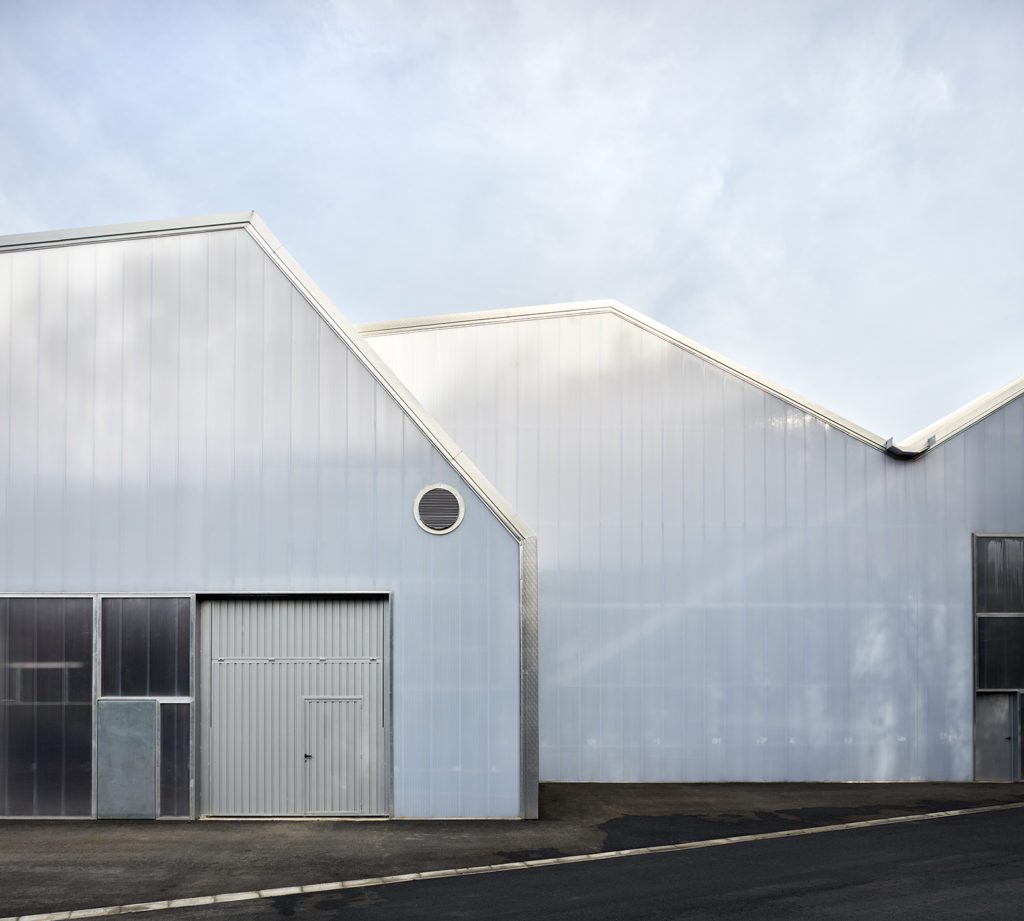 Sewage Treatment Plant of San Claudio by PADILLA NICAS ARQUITECTOS, San Claudio, Spain
Sewage Treatment Plant of San Claudio by PADILLA NICAS ARQUITECTOS, San Claudio, Spain
Jagged forms characterize the new extension to the Sewage Treatment Plant of San Claudio. As opposed to the traditional character of the original facility — with terracotta tiles and plastered walls — the addition uses modern materials such as aluminum cladding and translucent polycarbonate, leading to a light-filled interior. The building has a unique appearance from every angle. One side is floor to roof aluminum and the other fully transparent polycarbonate. Additional outbuildings are triangular, each finished in a different color.
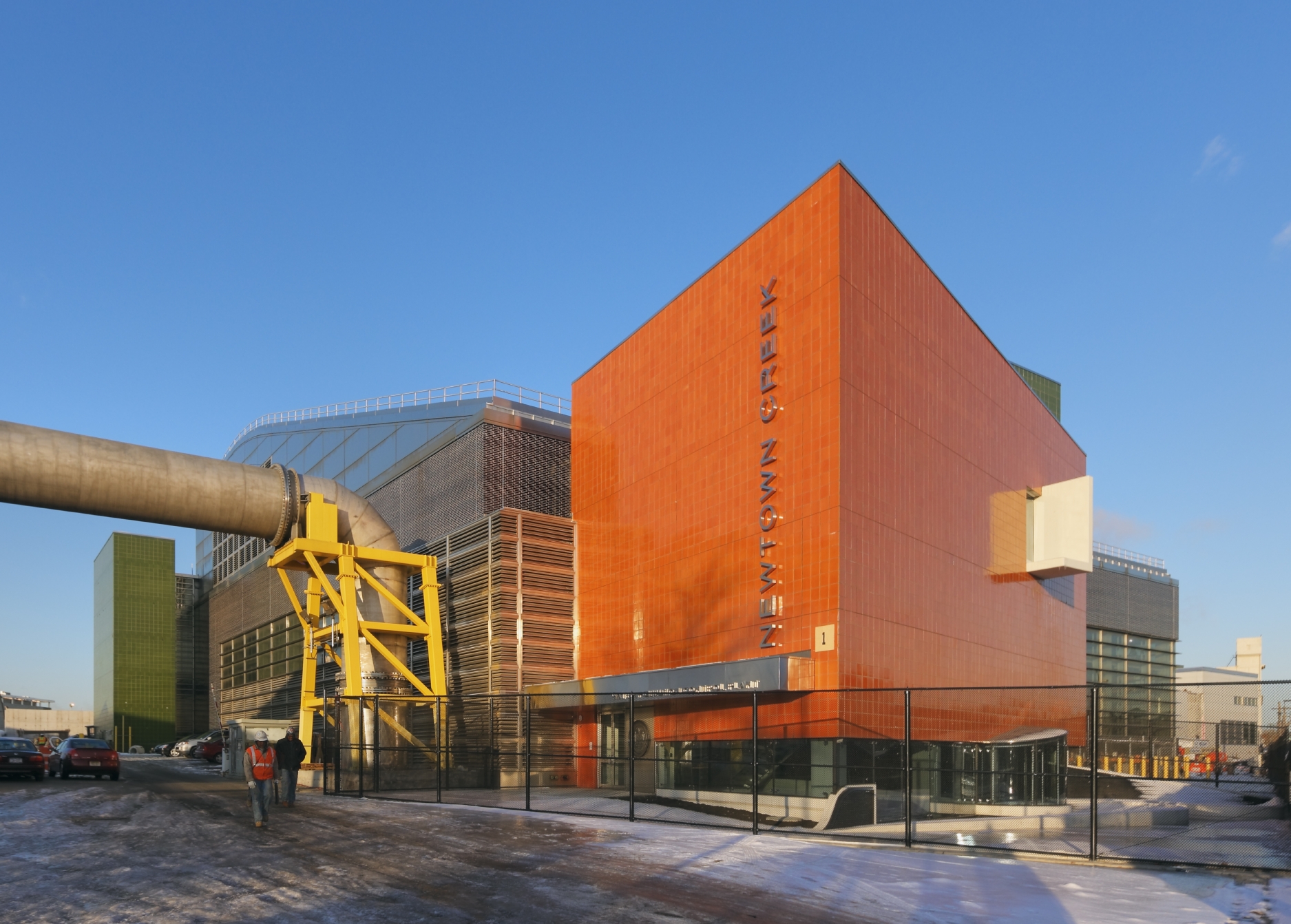
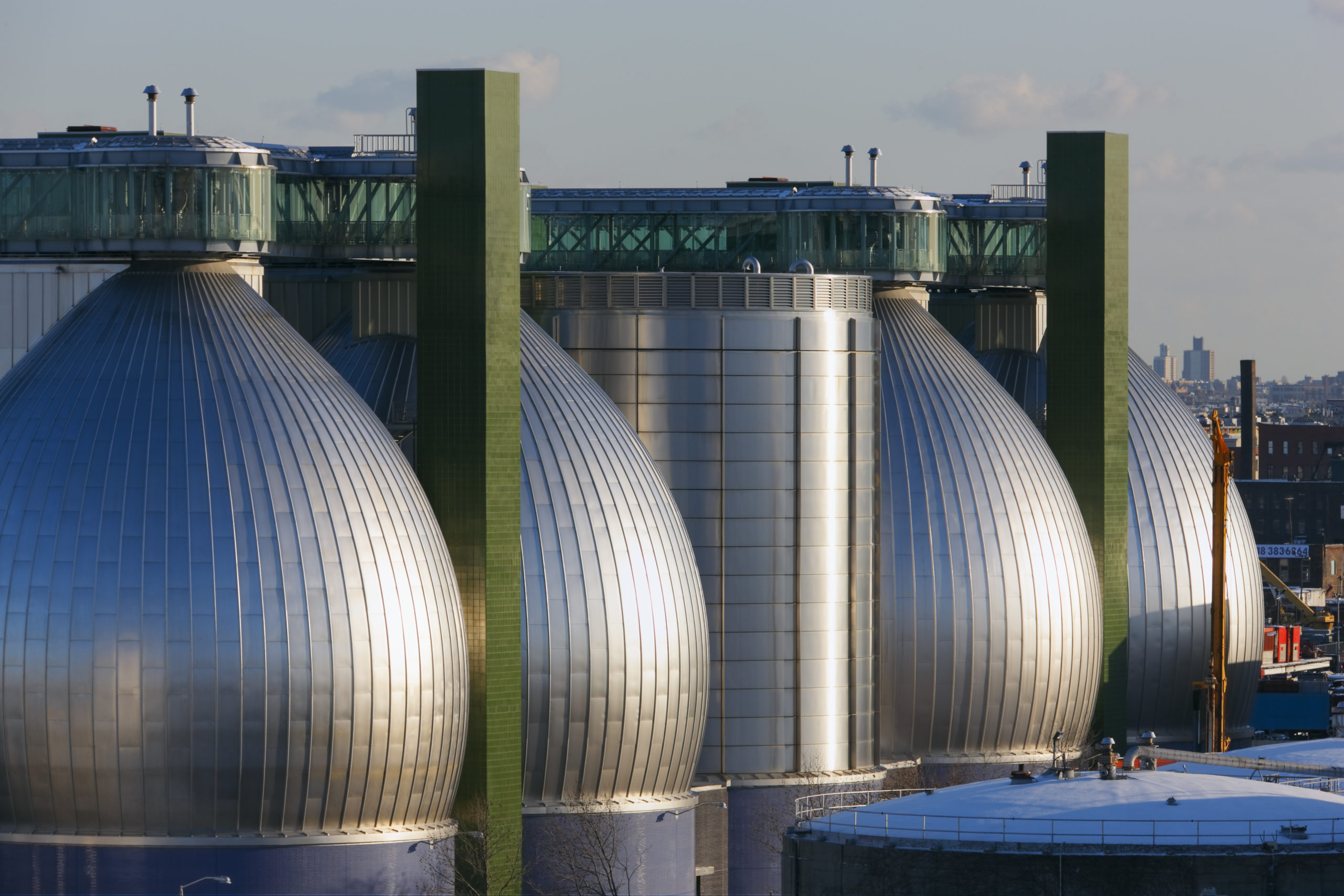 Newton Creek Wastewater Treatment Plant by Ennead Architects, Brooklyn, New York
Newton Creek Wastewater Treatment Plant by Ennead Architects, Brooklyn, New York
Megacities require immense infrastructure to supply clean water and properly dispose of sewage. As the most populous city in the United States, New York is no exception. The massive facility designed by Ennead Architects on the Greenpoint waterfront. The design of the project features colossal onion-shaped domes for water treatment, marked with eye-catching green glazed-tile towers. In addition to the construction of the new treatment plant, the architects collaborated with sculptor George Trakas to design a park for the community.

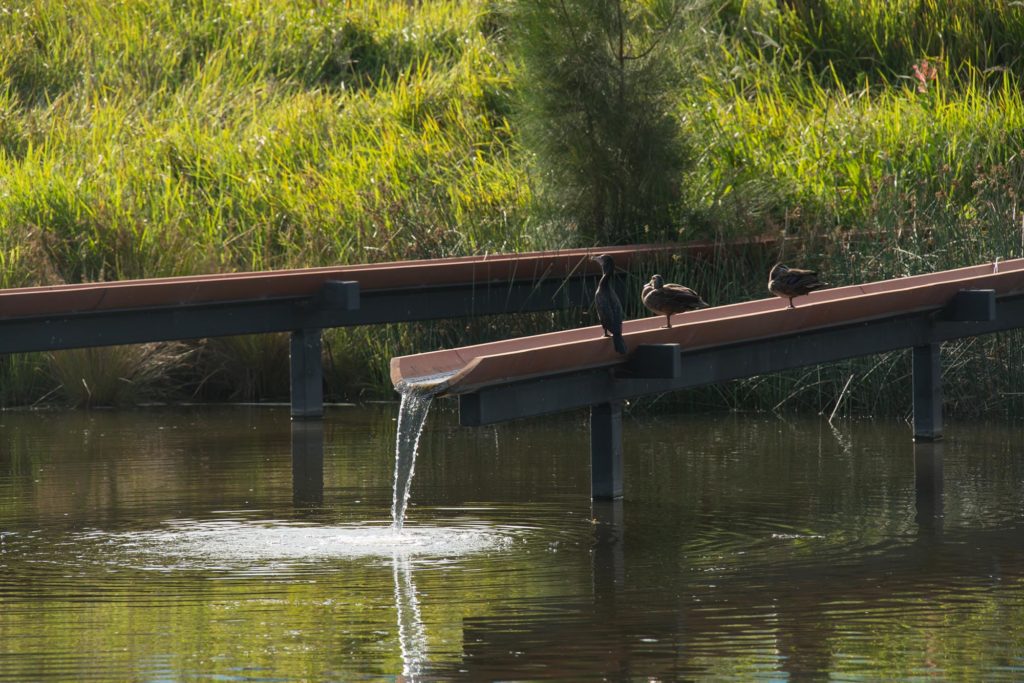 Sydney Park Water Re-Use Project by Turf Design Studio, Sydney, Australia
Sydney Park Water Re-Use Project by Turf Design Studio, Sydney, Australia
A devastating drought in the early 2000s instigated the city of Sydney to pursue a new approach to water conservation and management. As one way to reduce the city’s water usage, a park to capture and treat stormwater was planned. Through careful design and purifying treatments such as aeration devices, pollutant traps and wetlands, the city was able to combine the needs of a stormwater treatment plant with a public recreation facility. The project allows Sydney to recycle over 8 million gallons of stormwater each year. Not only does this help the city to be more environmentally conscious, it also prevents the untreated water from flowing directly into Botany Bay as it did previously.


Water-Treatment Plant by AWP, Évry, France
AWP’s design for the Évry Water-Treatment Plant plays with mass and weightlessness. Open wooden construction meets the traditional concrete forms associated with treatment facilities. Across from the main facility’s telescopic projection, a bridge through the retaining pond mimics its elongated form. The contrasting mix of materials — concrete and wood, plastic and metal — reflects the process itself, recalling ideas of filtration and reuse.
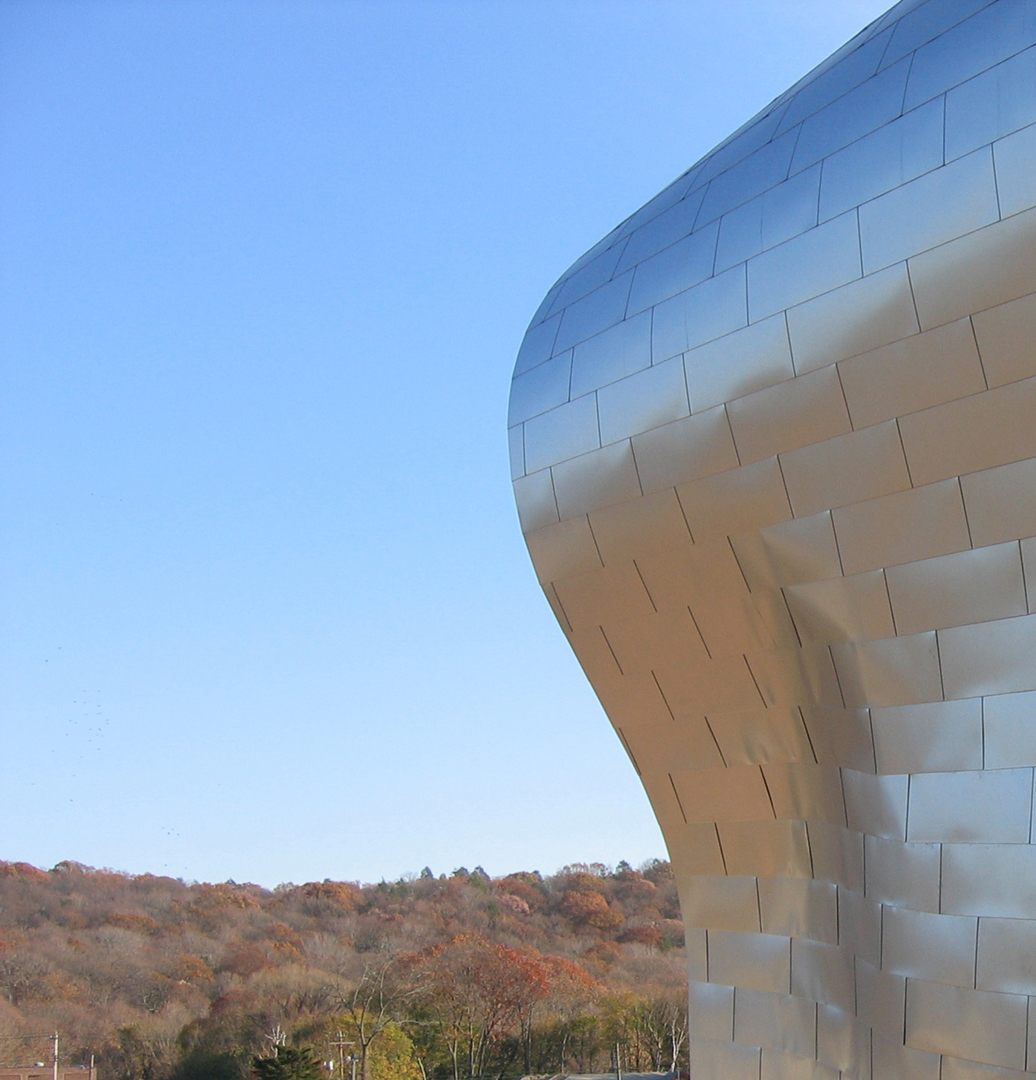
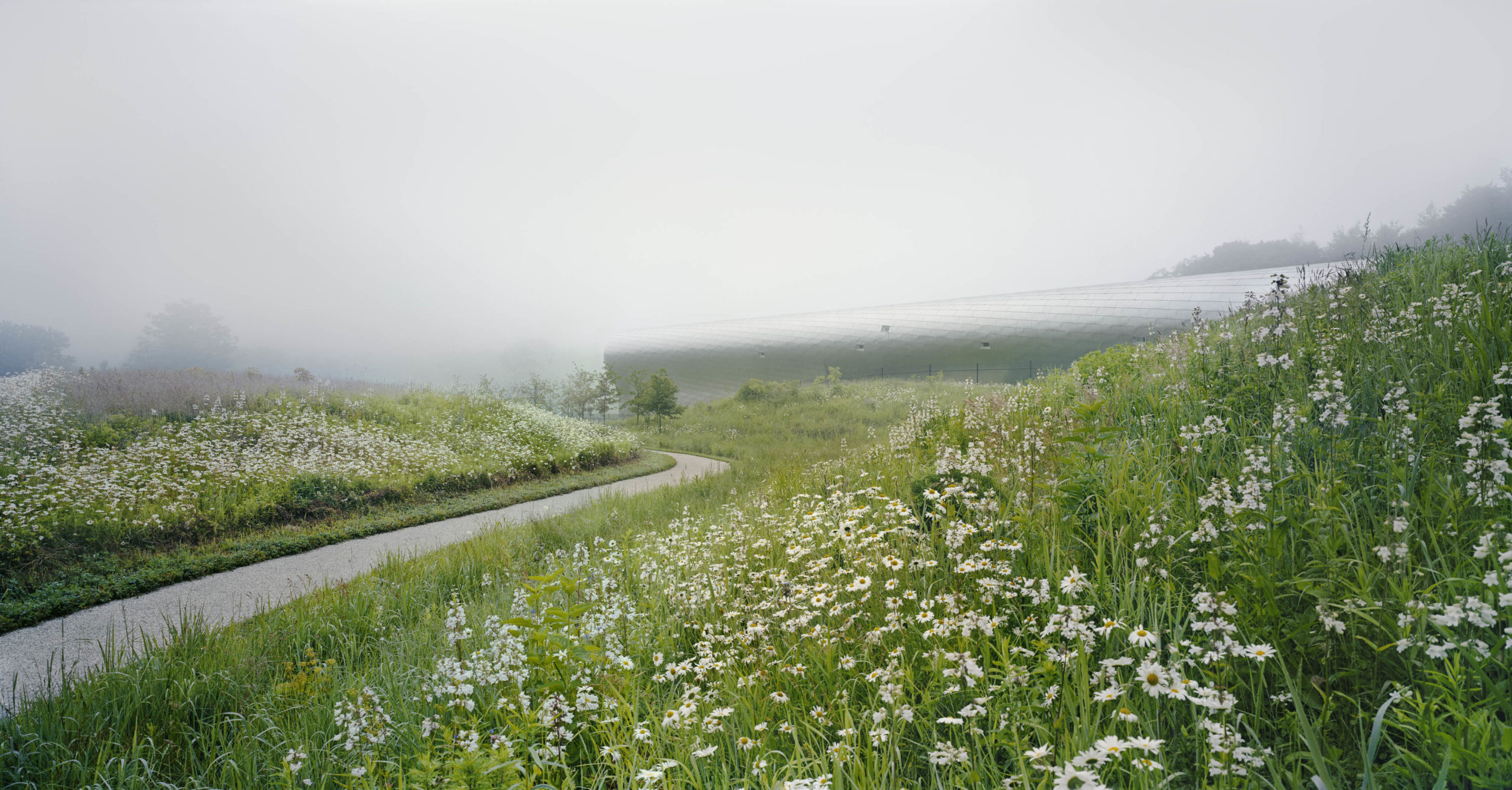 Whitney Water Purification Facility and Park by Steven Holl Architects
Whitney Water Purification Facility and Park by Steven Holl Architects
Each day, 15 million gallons of water are treated at the Whitney Water Purification Facility. But, like the Sydney Park Water Re-Use Project, it would be difficult to identify the function of the facilities simply by passing by the building. The site was designed to function as a public recreational facility and treatment plant. The hilly landscape camouflages much of the underground infrastructure. What is visible of the facility is a large zipper-shaped hall clad in metal.
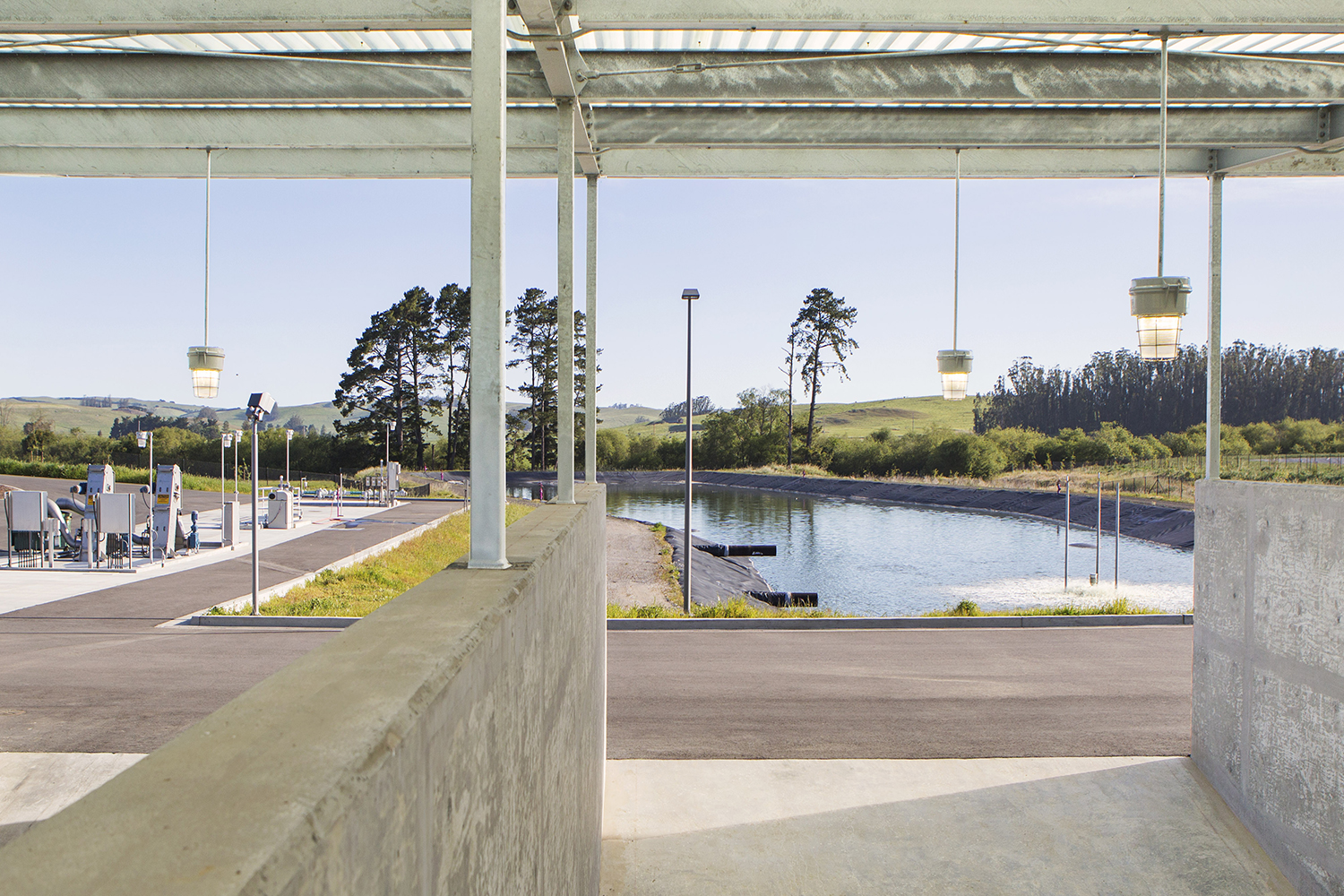

Photography by Billy Hustace
USCG Water Treatment Facility and Training Center by Marcy Wong Donn Logan Architects, Petaluma, CA
To meet the needs of 2,000 Coast Guard personnel, Marcy Wong Donn Logan Architects designed a modern treatment facility to conserve and reuse water. Owing to an agricultural site, steps were taken to conserve the unique riparian environment and minimize the impact of surrounding livestock. A sloped-roof building is dwarfed by the large retaining ponds and outdoor treatment sites. Annually, the facility is able to conserve and reuse millions of gallons of water.
Architects: Want to have your project featured? Showcase your work through Architizer and sign up for our inspirational newsletter.






 Muttenz Water Purification Plant
Muttenz Water Purification Plant  Sewage Treatment Plant of San Claudio
Sewage Treatment Plant of San Claudio  Sydney Park Water Re-Use Project
Sydney Park Water Re-Use Project  USCG WATER TREATMENT FACILITY AND TRAINING CENTER
USCG WATER TREATMENT FACILITY AND TRAINING CENTER  Water-Treatment Plant
Water-Treatment Plant  Whitney Water Purification Facility and Park
Whitney Water Purification Facility and Park 


